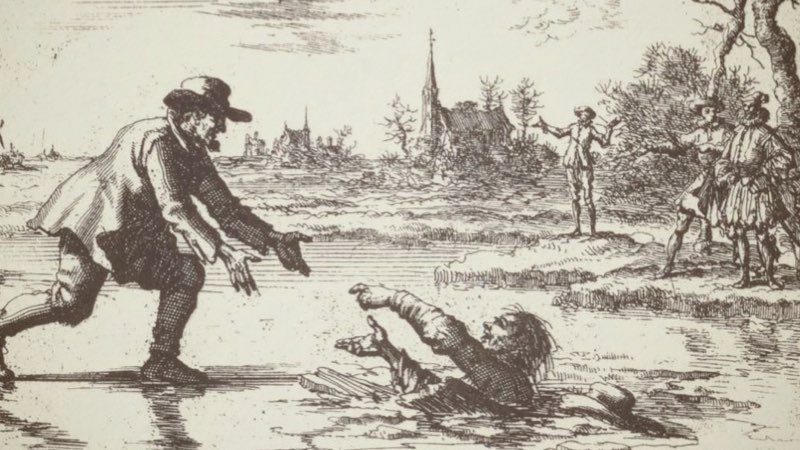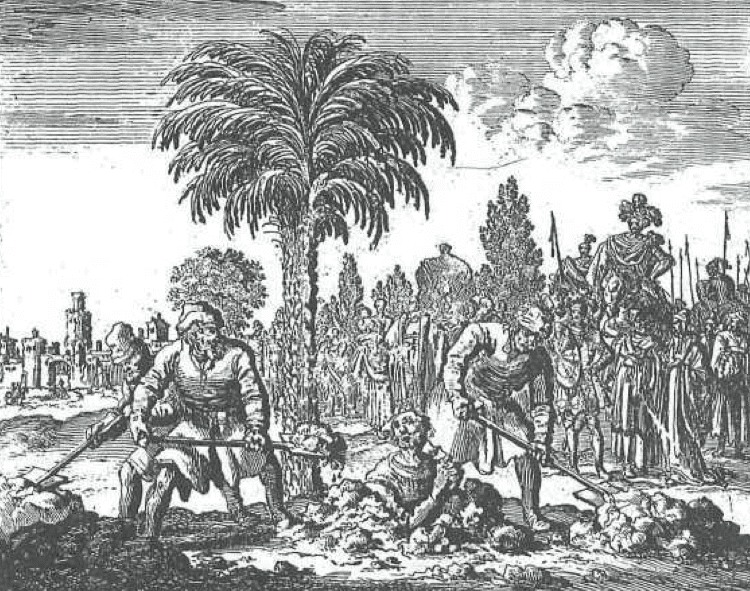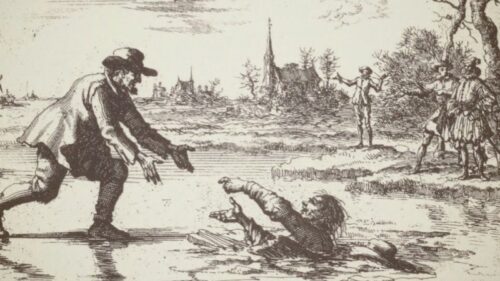
49. Vitalus
Vitalus buried alive in Ravena around the year 99
Vitalus, Buried Alive At Ravenna For The Name Of Jesus Christ; And His Wife Beaten To Death With Sticks, At Milan, About A.D. 99
Vitalus, before his conversion, was a Roman knight and citizen of Milan. He had come to Ravenna with Paulinus, the judge; but when he perceived the bloodthirstiness of his lord, whom he had hitherto served faithfully according to the manner of the world, he bravely left him, and straight- way enrolled himself under the banner of Christ, but was very soon apprehended by the enemies of truth. For Paulinus, his lord, not knowing why he had left him, but having learned that he had encouraged Urticinus—who had just before been beheaded with the ax, for the faith—when the latter wavered, and that he had restrained him from sacrificing to the gods; likewise, that he had buried him after his death, conceived a suspicion that he also must be a Christian. Upon this suspicion, and through the accusations of others, he had the pious Vitalus apprehended, and having found from his own confession, that he was really a Christian, he caused him to be put on the rack, to try him whether he would not apostatize from Christ.
Thereupon Vitalus addressed Paulinus, the criminal judge, in these words: “You must certainly be deprived of your reason, to think that I should be deceived by you, and brought to eternal suffering in soul and body, while I have sought to deliver others from the danger of delusion.”
A wicked heathen priest, perceiving that he adhered firmly to Christ, and would in no wise do honor to the gods, advised Paulinus to bury Vitalus alive. Paulinus, following the evil suggestion of this priest, had a deep pit dug down to the water, at the place where the Christians were usually executed—called ad Palmam because a palm tree stood there—and had Vitalus buried in it, up to the middle ( of his body), and then covered up with stones and earth.
Now when Valeria, the wife of Vitalus, after the death and burying alive of her husband, returned home from Ravenna to Milan, where she resided and had her children, she could not remain concealed long, but made herself known to be a Christian woman; for when she was constrained to eat of that which was offered to idols, she very stead-fastly refused and resisted, yea, moreover, openly reproved the idolaters, saying, “I am a Christian, and can, therefore, in no wise eat that which is offered to Sylvanus, your god.”
Thereupon these idolaters seized her, and beat her to death with sticks. She was buried at Milan by the Christians. This happened by virtue of the first persecution, or the edict of Nero, which, it is stated, remained in force under Vespasian and under Domitian. A. Mcll. Hist., jol. 16, col. 3, about Luke.
Concerning this martyrdom see the above mentioned authors, annotated with regard to Urticinus.
Thieleman J. Van Braght (1625-1664) was an Anabaptist who is best known for writing a history of the Christian witness throughout the centuries entitled “The Bloody Theater or Martyrs Mirror of the Defenseless Christians who baptized only upon confession of faith, and who suffered and died for the testimony of Jesus, their Saviour, from the time of Christ to the year A.D. 1660” (1660).
Thieleman J. Van Braght, Martyrs Mirror





